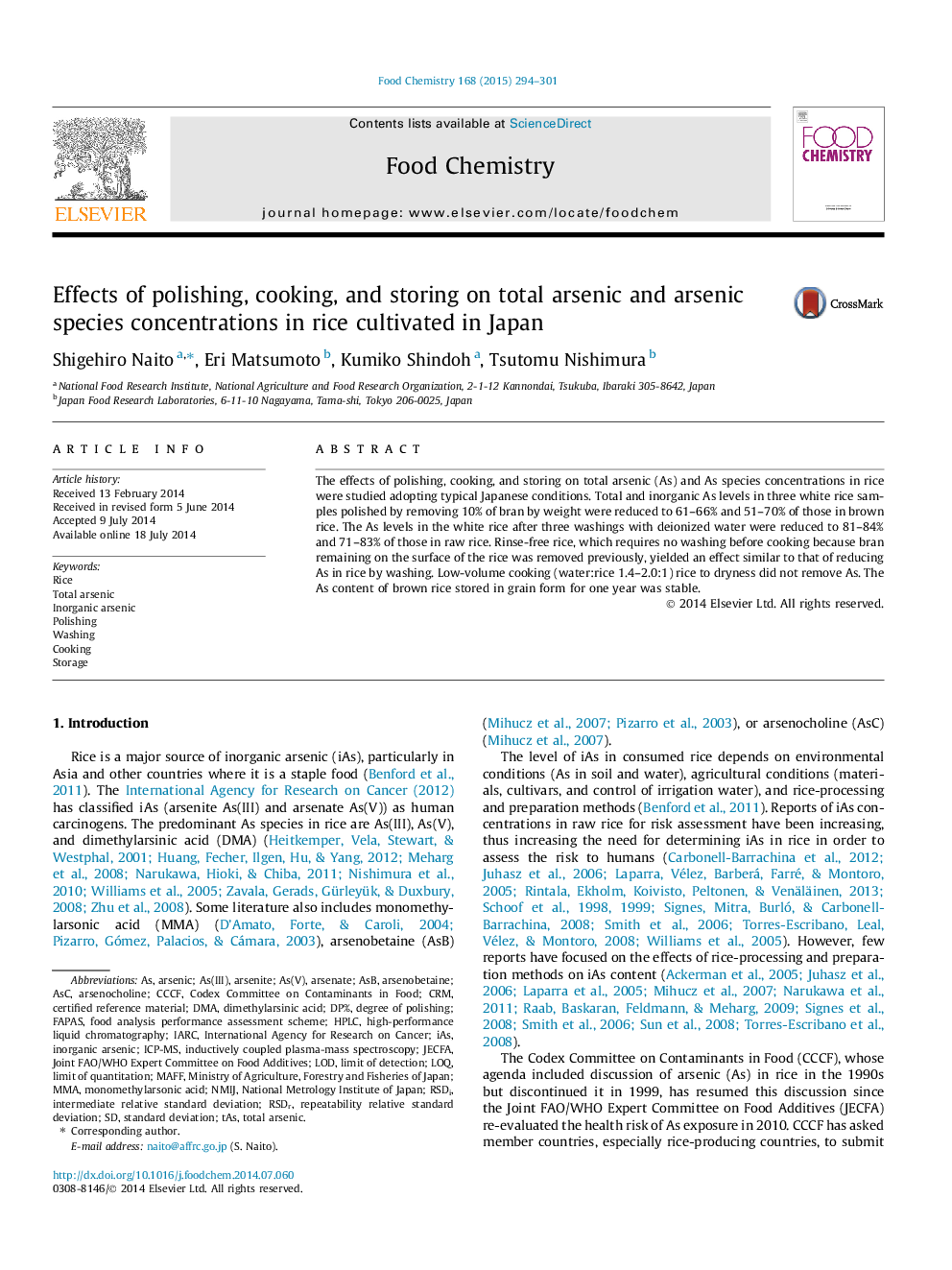| Article ID | Journal | Published Year | Pages | File Type |
|---|---|---|---|---|
| 7595150 | Food Chemistry | 2015 | 8 Pages |
Abstract
The effects of polishing, cooking, and storing on total arsenic (As) and As species concentrations in rice were studied adopting typical Japanese conditions. Total and inorganic As levels in three white rice samples polished by removing 10% of bran by weight were reduced to 61-66% and 51-70% of those in brown rice. The As levels in the white rice after three washings with deionized water were reduced to 81-84% and 71-83% of those in raw rice. Rinse-free rice, which requires no washing before cooking because bran remaining on the surface of the rice was removed previously, yielded an effect similar to that of reducing As in rice by washing. Low-volume cooking (water:rice 1.4-2.0:1) rice to dryness did not remove As. The As content of brown rice stored in grain form for one year was stable.
Keywords
ArsenocholineMMAiAsJECFACRMASCArsenobetaineFAPASFood Analysis Performance Assessment SchemeDMALOQMAFFArsenatearseniteArsenicInorganic arsenicIARC یا International Agency for Research on CancerInternational Agency for Research on Cancerdimethylarsinic acidmonomethylarsonic acidAs(V)LOD یا Limit of detectionInductively coupled plasma-mass spectroscopyICP-MSASBJoint FAO/WHO Expert Committee on Food Additiveslimit of detectionlimit of quantitationcertified reference materialAs(III)high-performance liquid chromatographyHPLC
Related Topics
Physical Sciences and Engineering
Chemistry
Analytical Chemistry
Authors
Shigehiro Naito, Eri Matsumoto, Kumiko Shindoh, Tsutomu Nishimura,
